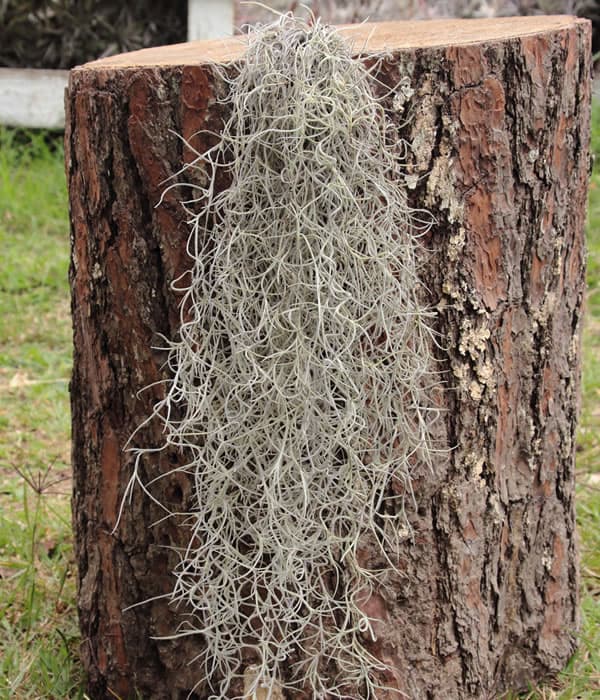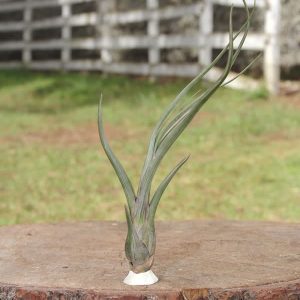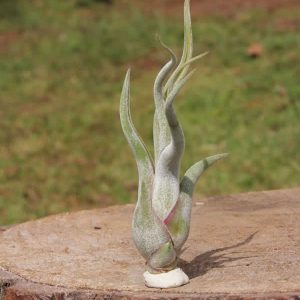Products
Usneoides
$1.50
Tillandsia usneoides, also known as Spanish moss, is an epiphytic flowering plant belonging to the Bromeliaceae family. It is native to the southeastern United States, from North Carolina to Texas, and is commonly found near rivers, lakes, and ponds. The plant is characterized by its weeping silver leaves that dangle down from old or dead trees.
Shipping Policy
Last Updated [Nov/2023]
Thank you for choosing airplantmarket.com for your Tillandsia needs. Please read the following Shipping Policy carefully to understand our procedures and guidelines regarding the shipment of your orders.
1. Order Processing:
We strive to process and dispatch orders promptly. Orders are typically processed within 5 business days, excluding weekends and holidays. Please note that processing times may vary based on product availability and order volume. You will receive a confirmation email with tracking information once your order has been shipped.
2. Shipping Methods and Costs:
We offer various shipping options with associated costs based on the destination and the selected shipping method. Shipping costs will be calculated at checkout, and you can choose the option that best suits your needs. Please refer to our checkout page for detailed information on available shipping methods and costs.
3. Estimated Delivery Times:
Delivery times vary depending on your location and the selected shipping method. While we make every effort to ensure timely delivery, please be aware that external factors such as customs processing, local postal services, or unforeseen delays may impact the estimated delivery date. We provide estimated delivery times during the checkout process for your reference.
4. International Shipping:
We are proud to offer international shipping to bring our Tillandsias to enthusiasts around the world. International customers are responsible for any customs duties, taxes, or import fees associated with their orders. Please be aware of your country's import regulations and fees before placing an order.
5. Order Tracking:
Once your order has been shipped, you will receive a confirmation email with tracking information. This allows you to monitor the progress of your shipment in real-time. If you encounter any issues with tracking or have questions about the status of your order, please contact our customer service team at customerservice@tillcorp.com.gt.
6. Damaged or Lost Shipments:
In the rare event that your order arrives damaged or is lost during transit, please contact us immediately at customerservice@tillcorp.com.gt. We will work with you to resolve the issue and ensure your satisfaction. Please refer to our Returns and Exchanges Policy for more information on damaged or lost shipments.
7. Changes to Shipping Policy:
We reserve the right to update and modify our Shipping Policy at any time. Any changes will be effective immediately upon posting on our website. It is your responsibility to review this policy regularly, and continued use of our website constitutes acceptance of the updated policy.
If you have any questions or concerns regarding our Shipping Policy, please contact us at customerservice@tillcorp.com.gt. Thank you for choosing airplantmarket.com for your Tillandsia needs.
Tillandsia usneoides, also known as Spanish moss, is a native, perennial epiphytic herb belonging to the Bromeliaceae family. It is characterized by its slender, wiry, long, branching stems that can reach up to 8 meters or more, growing as suspended, bluish-gray streamers and garlands among tree branches, sometimes telephone lines, and fences. The plant is native to the southeastern USA, from North Carolina to Texas, along the coastal plain in high humidity areas.
Key features of Tillandsia usneoides include:
– **Leaves**: The leaves are awl-shaped, alternate, simple, linear, entire, cylindrical (terete), succulent, gray-green, and densely covered with absorbent gray scales.
– **Stem**: The stem is wiry, flexuous, with widely spaced internodes to 2.5 inches, and can hang down up to 20 inches long.
– **Habitat**: Spanish moss is often found near rivers, lakes, and ponds, and it grows in tropical and subtropical climates.
– **Ethnobotanic Uses**: Various Native American tribes, including the Houma and the Seminole, have used Spanish moss for various purposes, such as weaving the fibers into coarse cloth, floor mats, and horse blankets, or twisting them into cordage for ropes.
Tillandsia usneoides has been suggested as a potential bioindicator of air quality, as it absorbs water and nutrients directly from the air.
| Size | REGUL – 100 for pack |
|---|






